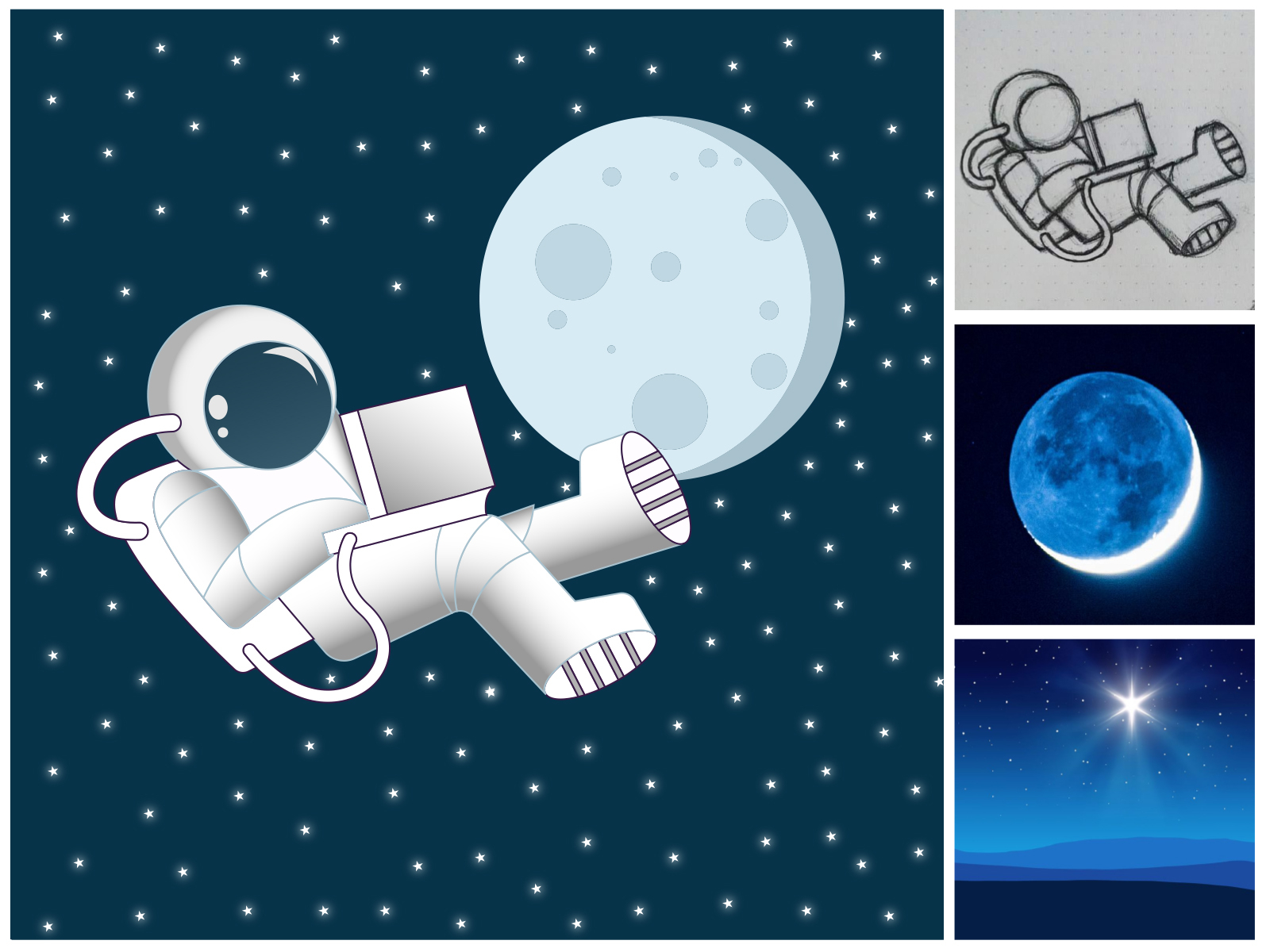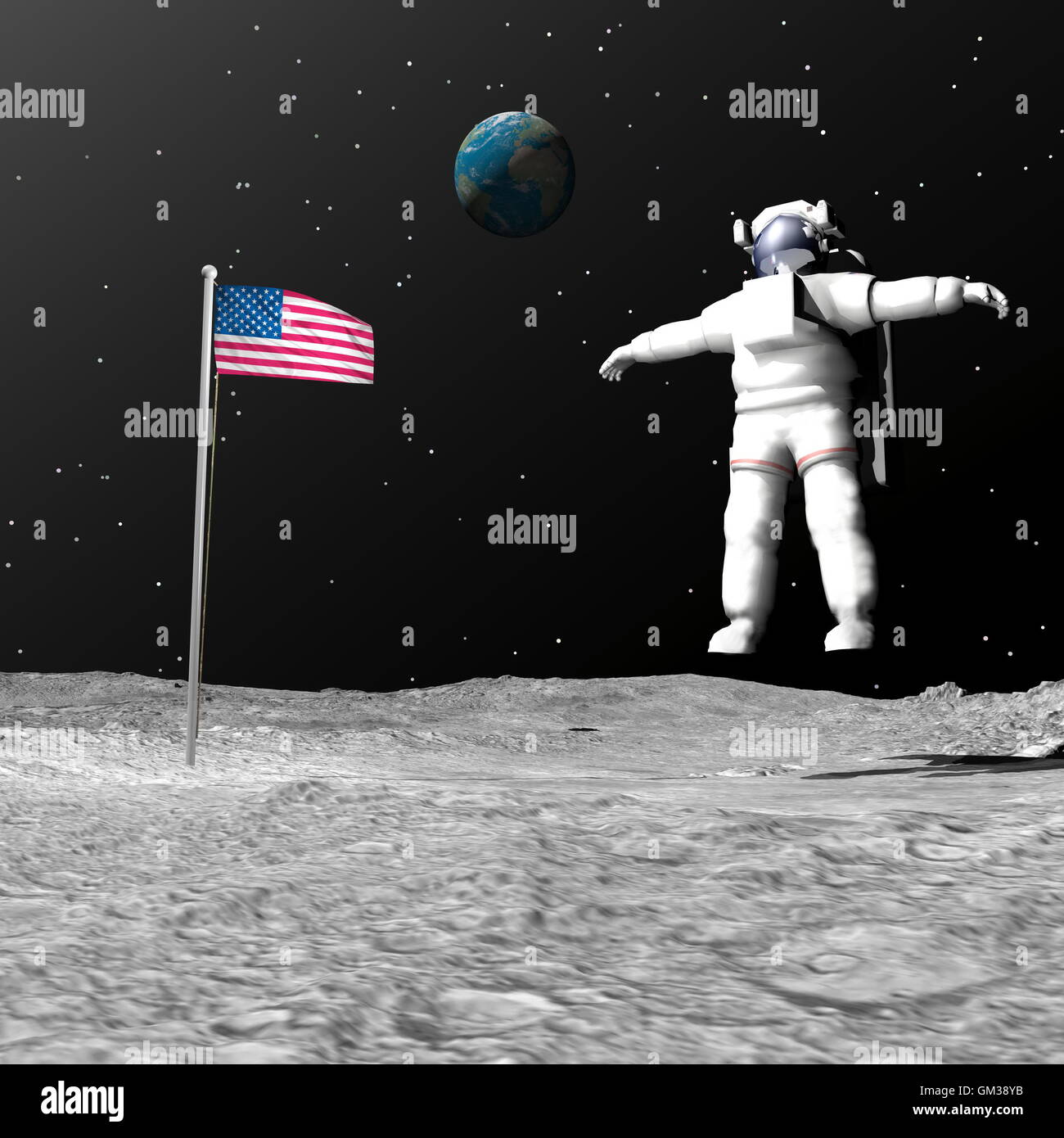
- #Man on the moon pictures from space pdf
- #Man on the moon pictures from space series
- #Man on the moon pictures from space tv
#Man on the moon pictures from space tv
So networks actually had to film “man’s greatest achievement” from a TV screen in Houston–a deliberate ploy, says Rene, so that nobody could properly examine it.īy contrast, the still photos were stunning. Part of the reason for the low quality was that, strangely, NASA provided no direct link up. The world tuned in to watch what looked like two blurred white ghosts gambol threw rocks and dust. For a start, he says, the TV footage was hopeless. Six claim to have made it, with the ill fated Apollo 13–whose oxygen tanks apparently exploded halfway–being the only casualties.īut with the exception of the known rocks, which could have been easily mocked up in a lab, the photographs and film footage are the only proof that the Eagle ever landed. And so, says Rene (and a growing number of astro-physicists are beginning to agree with him), the great Moon hoax was born.īetween 19, seven Apollo ships headed to the Moon. With an impassioned speech he secured the plan an unbelievable 40 billion dollars.

The story lifts off in 1961 with Russia firing Yuri Gagarin into space, leaving a panicked America trailing in the space race.Īt an emergency meeting of Congress, President Kennedy proposed the ultimate face saver, put a man on the Moon. Published by himself, it’s being sold by mail order – and is a compelling read. But Rene has now put all his findings into a startling book entitled NASA Mooned America.

It is of course the conspiracy theory to end all conspiracy theories.
#Man on the moon pictures from space pdf
Caption by Holli Riebeek.Click the Book Cover to Download the PDF File NASA illustration courtesy Orbital Debris Program Office.
#Man on the moon pictures from space series
To read more about what it takes to maintain a satellite’s orbit, common Earth orbits, and the science behind calculating an orbit, please see the Earth Observatory series About Orbits. NASA flight engineers are carefully tracking the debris from the Iridium collision, since much of it is near the altitude at which EOS satellites orbit. As of May 2009, satellites in NASA’s Earth Observing System had been maneuvered three times to avoid orbital debris. If any debris comes into the path of an operating NASA satellite, flight controllers will maneuver the satellite out of harm’s way. Collisions between large objects are fairly rare. The dots are not to scale, and space is a very big place. Though the black dots that represent objects in space swarm around the Earth, obscuring the surface in the lower image, the space junk situation is not as dire as it may appear.

To read more about common satellite orbits, see Catalog of Earth Satellite Orbits on the Earth Observatory. The dots between the geostationary orbit and the low-Earth orbit are in an orbit used by GPS satellites or a highly elliptical orbit, called Molniya, used to monitor the far north or south. When satellites in geostationary orbit are taken out of operation, they are moved to another orbit to keep the geostationary orbit clear. This orbit is invaluable for weather and communications satellites.

The lower image shows all items in orbit, both close to and far from the Earth.Ī distinctive ring marks the geostationary orbit, a unique place where satellites orbit at the same rate that the Earth turns, allowing them to essentially remain over a single spot on Earth at all times. Of the approximately 19,000 manmade objects larger than 10 centimeters in Earth orbit as of July 2009, most orbit close to the Earth, top image. The images were made from models used to track debris in Earth orbit. These images represent all man-made objects, both functioning and useful objects and debris, currently being tracked. Space Surveillance Network tracks all debris larger than 10 centimeters. To minimize the risk of collision between spacecraft and space junk, the U.S. The collision destroyed both satellites and created a field of debris that endangers other orbiting satellites. communications satellite owned by a private company called Iridium collided with a non-functioning Russian satellite. Space junk can be bad news for an orbiting satellite. Orbital debris, or “space junk,” is any man-made object in orbit around the Earth that no longer serves a useful purpose.


 0 kommentar(er)
0 kommentar(er)
